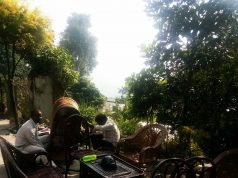Elevated Roads or Elevated Risks?
 By Bharti P Jain
By Bharti P Jain
As an architect and long-time resident of the Doon Valley, I feel compelled to raise a concern that has been absent in much of the discussion on Dehradun’s traffic projects: the limits of our valley’s carrying capacity and the ignored geology beneath our feet.
Carrying Capacity cannot be ignored for both Dehradun as well as Mussoorie
Mussoorie is a hill station with natural limits—terrain, ecology, and services cannot endlessly expand. Yet, projects like the proposed Rispana Bindal Elevated Corridor (RBEC) are being promoted as traffic solutions without addressing these limits.
Ask yourself: where will the cars go once they do reach Mussoorie? There is still no proper public parking plan! Without parking and visitor management, every new road is just pushing the problem further uphill.
Four existing roads and an under-construction Dehradun Mussoorie Ropeway
Dehradun already provides four access routes to Mussoorie: Rajpur, Kimadi, Maldevta and Misrajpatti (proposed). If tourist traffic were distributed across these four roads, the city traffic congestion at Rajpur and Kimadi could be eased naturally.
The Dehradun–Mussoorie ropeway is the single biggest addition to the hill town’s connectivity. It is designed to carry thousands of visitors daily without adding cars to already choked roads. Between the ropeway and the four routes, we already have the framework for sustainable mobility—what is needed is management, not more concrete.
This was, in fact, the vision of the Smart City Plan: manage inflow at entry points, not dump it all into one road.
The Geological Blind Spot
Traffic engineers are debating lanes and spans, but few are asking: what happens to our rivers when their beds are excavated and concreted for pillars? Riverbeds in Doon carry metres of loose silt and boulders. Foundations will mean massive excavation and disposal of soil—lakhs of cubic metres.
If dumped along rivers, beds will rise, increasing flood risk. If concreted, seepage into aquifers will be blocked. These rivers are not just seasonal drains; they are the veins that recharge our groundwater. By obstructing them, we risk floods in the monsoon and droughts in the summer.
Why This Matters to All of Us
Dehradun already faces falling groundwater levels. RBEC may give us a temporary traffic bypass, but it will take away something far more precious—our water security and ecological balance. We, the residents of this valley, must decide: do we want short-term relief at the cost of long-term survival?
A Call to Residents
This is not just an engineering issue. It is a citizens’ issue as well. Our city’s future cannot be decided by traffic charts alone- while geology, ecology, and daily life are left out of the conversation.
I urge fellow residents of Doon to come forward, speak up, and insist on solutions that respect both mobility and nature. If we stay silent, we may one day find our valley trapped between congestion above ground and crisis below it.
(Bharti P Jain is Principal Architect at P Jain & Co.; Convenor, Intach Dehradun Chapter, and Member of Dehradun Citizens’ Forum.)






